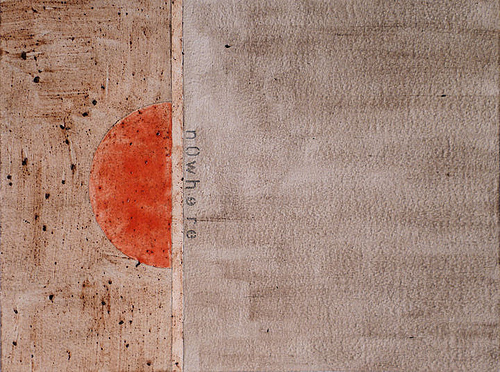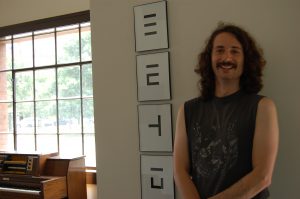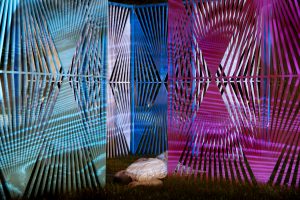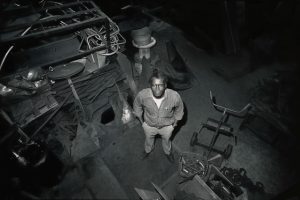The Chicago Art Coalition has offered an artist residency at a space provided in the Merchandise Mart. Six artists have been brought together all coming from different backgrounds bringing forth a variety of styles and experiences. Alexandra Lee is the second artist I spoke with and we discussed how her art making process has adapted and expanded since she began working in the Merchandise Mart space.
Nicolette Caldwell: What has this residency been like for you and how has it helped your work progress?
Alexandra Lee: I have been working in this residency for six months. We are going to get renewed for another six months. We were selected by the CAC as part of the pop-up gallery residency thing. Normally I don’t really work on paper but I think this is a great opportunity for me to create a body of work that is more physical because usually I work in digital media and performance. And working in this space my goal is to incorporate things I already have and things that I can pick up from a sustainability perspective like newspaper from Mark that I recycle into paper and the other stuff is just paper that I have. In that series particularly I was using things like cinnamon spice and incense ash. These are things that I would not particularly use or keep especially with the incense ash and now I am making it into paint. The whole idea is to use the stuff that would not otherwise be kept or tossed into a landfill.
NC: How long have you been living and working in Chicago and how did your work change when you moved here?
AL: I came to Chicago in 1988. When I first moved here I was in my teens. Basically I was doing watercolor and geometric abstract landscapes. Other than that, I am not sure that there is really anything that ties back to where I was born. I think that when you are a little kid you start with general classical stuff so things become more figurative and you can tell what it is that you are doing. Now I am not so sure.
 NC: Can you tell me a little more about the Bombyx Mori series?
NC: Can you tell me a little more about the Bombyx Mori series?
AL: This is not just the series but also the entire work. It is a Latin term for silkworms. My great grandfather was a silk farmer in China. My grandmother taught me how to turn a silkworm into fabric. The whole process of the worm is that everything is consumed. You let it life it lays eggs and it keeps living and you get more silk. Most of them get killed so that they do not break the threads and then they are boiled. The moths that they let live end up getting fed to the fish. That came with the whole idea that everything is used and nothing is wasted.
NC: How do you choose the text that you incorporate in each piece?
AL: The words in this piece are chosen from the Diamond Sutra that is a Buddhist text about compassion and mercy. It teaches you basically how to be.
NC: You mentioned how you try to investigate or create an intervention between dream and reality. Does this sort of tie into that as well?
AL: World peace is a dream. In a way this is why I am making are and doing what I do with my day job. It is about changing the world a little at time considering that I am a small part of this art world. This is why I think what you are doing is so great. Because you are taking a bunch of artists that people do not normally pay attention to and making an n archive of them. I think that is really cool.
NC: We think it is really important to do this because it give a level of transparency that is sometimes overlooked or forgotten about. As art historians we already try to look back and analyze but we decided that first hand perspective or non-biases interviews are more important when creating an honest archive of contemporary art. Speaking of trends do you find any in yours or a body of work that is receive well over others?
AL: Most of my work that is sold are all photography based like my work from Hong Kong. Also, photographs that I took from the family photo album that I modified in Photoshop. Those are the ones that I deal with tradition and the palette is more colorful so I think they are more accessible. People understand the importance of tradition.
NC: Does this project by any chance stem from your experience with living in a fast paced environment and your experience with living through a cross-cultural lifestyle?
AL: These are all different layers taken from a different period of time. Things are always changing. In a way it is always in you. Hong Kong is a multi-national place so it is very different from China itself. I went to a Catholic school run by a bunch of American nuns. It is not specifically mentioned but it is a part of you. I think that is what it is.
Alexandra Lee’s website www.atyl.daportfolio.com





